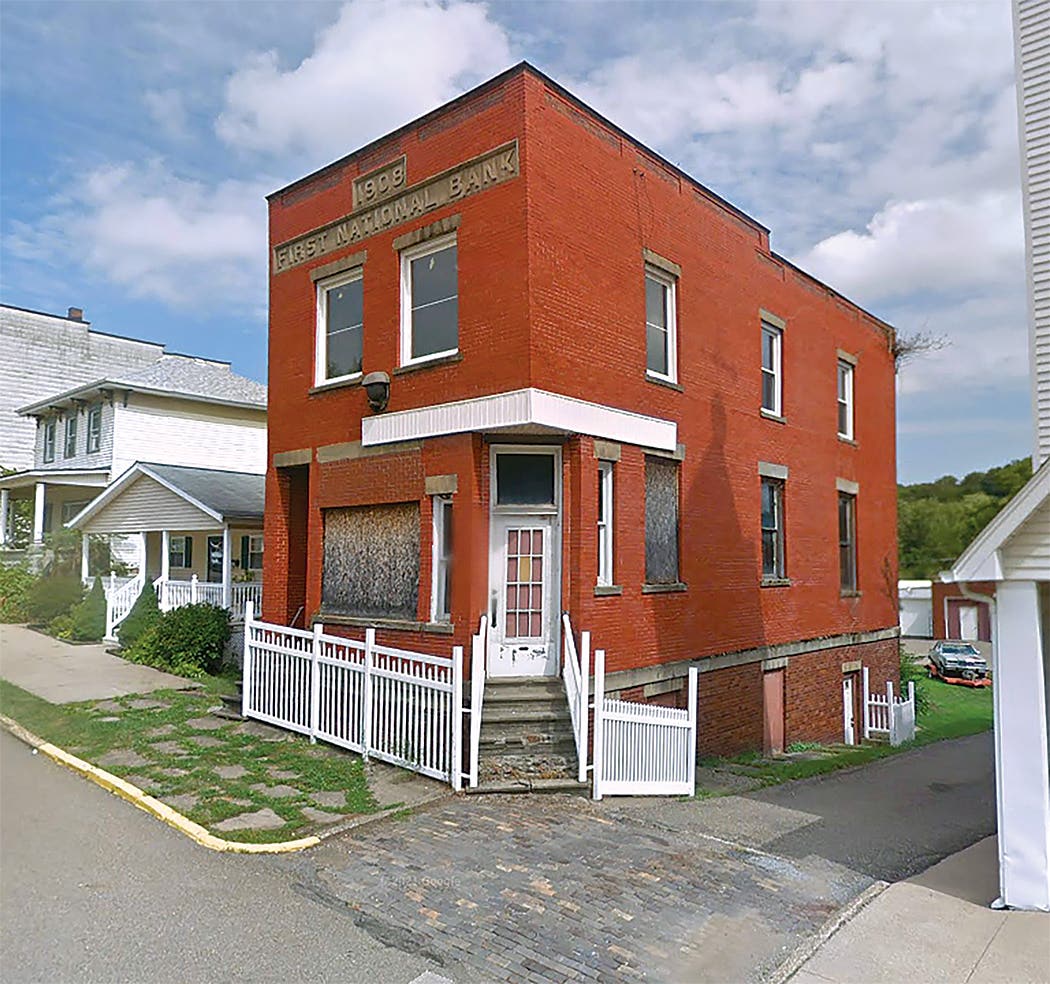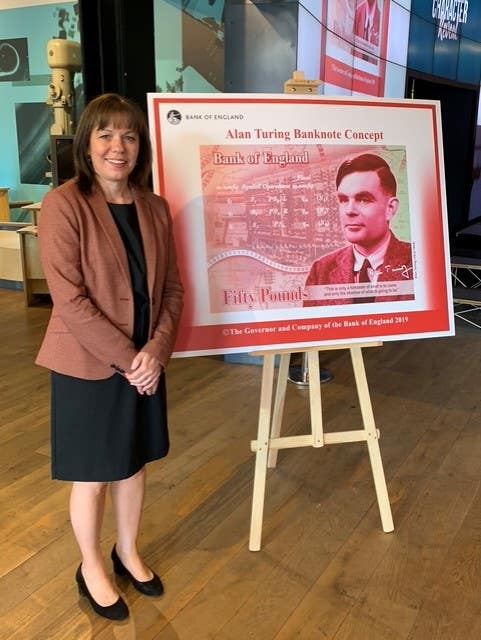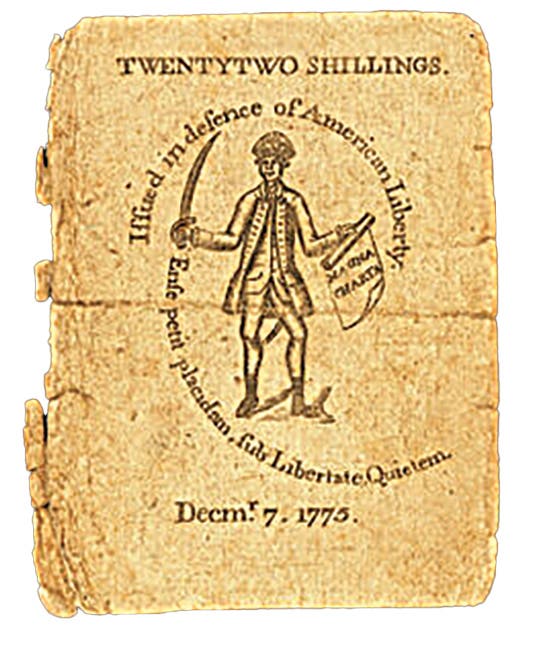Number 1 Phoenix 82BB Arizona Territorial Sends Shockwaves
A note from the first sheet issued to The Phoenix National Bank, Territory of Arizona, just docked in Andrew Shiva’s collection. This 1882 brown back, in beautiful condition, is numismatically…
A note from the first sheet issued to The Phoenix National Bank, Territory of Arizona, just docked in Andrew Shiva’s collection. This 1882 brown back, in beautiful condition, is numismatically significant as one of the greatest Arizona brown backs to be discovered and drips of historic significance for the founding of one of Arizona’s largest national banks that operated during the national bank note issuing era. The note is simply a beauty to behold, being graced with bold penned signatures of president James A. Fleming and cashier Ephraim J. Bennitt, that remain as strong as when they were inscribed in 1892.
This is a note whose value transcends numismatic grading, because for what it is, grade means nothing. It is a piece of paper, a delicate object, that is no longer gem uncirculated as it came off the press at the Bureau of Engraving, but rather what appreciative numismatists would call a mishandled Unc. The light quarter folds that are evident don’t detract a bit from its historic significance or value. The important thing is that it was saved and survived!
The story of the note is the story of the founding of The Phoenix National Bank and its organizers. James Fleming bankrolled the enterprise but, in fact, the bank was a temporal dalliance for him as he pursued truly great wealth first in petroleum and later mostly in copper. Ephraim Bennitt is usually credited with actually organizing the bank, and he was the operations officer and day-to-day public face of the bank from the time of its founding. Bennitt was the banker, with seasoning gained by previous service in The First National Bank of Phoenix where he served as assistant cashier.
Fleming sold his controlling interest in the bank after three years to pursue oil and minerals. Bennitt stayed with the bank for two more years before moving over to the Valley Bank of Phoenix, the successor to The First National Bank, where he continued to build his banking career as well as serve several terms as City Treasurer of Phoenix, and serve on the Board of Governors of the Salt River Valley Water Users Association.
To appreciate the origin of both The Phoenix National Bank and this wonderful number 1 note, we will profile both of these founders. It is presumptuous of me to render a psychological profile of either man or otherwise speak to their personalities.
However, by simply following the fleeting mentions of the movements of Fleming through time reveals a restless, aggressive and driven entrepreneur who had the wherewithal to pursue high-risk ventures and cobble together the corporate organizations that could carry out his objectives. For one thing, he was willing to move around the country back in a time when you didn’t jump on a plane and have your household goods delivered by van a few days later.
Fleming didn’t seek personal attention, annoyingly revealed to historians by the fact that he didn’t bother with the Who’s Who-type vanity publications of the time that profiled prominent movers and shakers. Also, no comprehensive obituary was written for him. One consequence is that I have been unable to find a photo of the man. The only way I could glimpse him was through fragmentary news reports and scanty public records.
Bennitt, on the other hand, had a more traditional public persona with a decent writeup in Notables of the West, a book of puff pieces compiled by the International News Service complete with the fine portrait reproduced here.1
James Alexander Fleming was born July 3, 1849, in Indiana, Pa.2 At the age of 16, he got in on the oil boom east of Pittsburg3 when Pennsylvania was the leading producer of oil in the United States, becoming president of the Petroleum Products company of Pennsylvania, where he reportedly made a small fortune.4,5
He then came west in 1879, 5 settling in Arapaho, Colo., 6 where he “was one of the principal promoters of the Denver Tramway company, and at one time held large interests in South Denver.”7 While in Colorado, he served as the first mayor of South Denver and dealt extensively in real estate.3
He moved to Phoenix in the early 1880s to get in on the development of the Salt River Valley. To this end, he built the Fleming Building on the northwest corner of Washington Street and First Avenue in 1883, a substantial two-story brick edifice that boasted the first elevator in the territory. Two more stories were added to the building in 1896.8
He and associates filed the organization papers for The Phoenix National Bank on March 20, 1892, and were granted charter 4729 on April 20. The bank was capitalized at a modest $100,000 and took out a circulation of $22,500. Fleming was installed as president and Bennitt as cashier. The bank operated out of the Fleming building.
Bennitt was the first to leave the bank when he resumed his own loan and investment business in 1894.1 Fleming sold his majority position in February 1895 to a consortium led by F. S. Belcher, president of The First National Bank of Charlotte, Mich.9 Belcher took over as president and Fleming remained on the board as a minority stockholder.
Fleming was active in Democratic politics wherein he befriended Democratic Territorial Governor Louis Hughes, who had been nominated for the post by President Grover Cleveland and held that office from April 1893 to April 1896. Fleming served as territorial treasurer. Important for Fleming was that Hughes conferred on him the title Colonel of the Arizona Rangers, a title that he cherished and used for the rest of his life.10
He then moved to Globe to capitalize on the copper boom there. His principle investment in the Globe mineral belt was an owner-interest in the Black Warrior mine, one of the most promising copper deposits in the vicinity.11 The mine was scheduled to go into production in 1899 with ore reserves estimated at $6 million. Fleming was pushed out of the Black Warrior Copper Company Amalgamated in a hostile stock takeover in 1904, in which he was forced to relinquish his presidency.12,13
Fleming’s next banking venture in Phoenix was announced in 1904 when he attempted to organize the Fidelity Trust Company of Arizona.14,15 His son Porter was named secretary. However, nothing came of it.
Around 1904, Fleming became involved in oil exploration in the Indian Territory, joined by his son Porter. Porter tragically contracted malaria there, returned to Globe in 1906 in bad health, and leaving a wife “ended his suffering with a pistol ball.”16
By 1914, Fleming had organized the Tonto Basin Company to undertake oil exploration drilling in the Tonto Basin northwest of Globe.17 Fleming was not knocked out of the Globe copper scene, though. In 1915 it was announced that he and his associates were making progress on the Old Champion mine four miles west of McMillan.18
Fleming died Jan. 26, 1917, at age 67.2
Ephraim James Bennitt’s story is a bit more traditional for a pioneering Arizona banker. He was born in Moreland, N.Y., June 13, 1853, and educated as a civil engineer at Union College at Schenectady.19 Upon graduation, he left in June 1875 for Junction City, Ks., which was the end of the railroad. There he joined his parents and brother as part of an 80-person wagon train headed to the gold fields of Arizona. Their ox-drawn outfit arrived in Prescott five months later. After a futile winter of prospecting for gold in the Bradshaw Mountains, he spent the next several years operating a mercantile store, surveyed for an ill-fated railroad venture, and ending up as a clerk in the M. Goldwater & Sons Mercantile firm in Prescott.1
His big break came in 1882, when he was recruited to go to Phoenix with William Christy in order to assist with the organization of The First National Bank of Phoenix. Christy, a Civil War veteran, was joining forces with William Murphy, a major land developer and organizer of the newly formed Arizona Canal Company, with diversion rights to the Salt River.
Murphy’s interest in the bank was to use it as a vehicle to help finance his ventures. The bank had a less than 8-month life as a national bank. It was organized Aug. 27, 1883, chartered Sept. 21, and liquidated April 7, 1884. Bennitt served as the assistant cashier in that bank.20
The problem faced by the bankers was that they extended more credit to Murphy’s canal enterprise than allowed under national banking law. The national bank examiner was not happy with such items on the books, which drew requests from the Comptroller of the Currency John Jay Knox for explanations and corrective action.
The solution was to reorganize under the looser corporate laws of Arizona Territory. They folded the assets of the liquidated First National into their newly organized Valley Bank of Phoenix. A new president was named, Moses H. Sherman, another land developer and builder.
The Valley Bank was one of the principal players in banking in Phoenix for the next 30 years. Murphy’s Arizona Canal opened in the summer of 1885, and he became a leading land developer and active promoter of citrus. Christy introduced Hereford cattle into the Salt River Valley and successfully promoted the growing of oranges, olives and grapes as well as other fruits throughout the valley.
Although Bennitt remained a stockholder and director in the Valley Bank, he withdrew as assistant cashier to open his own E. J. Bennitt & Company loan and investment firm in the late 1880s. It was at this time that he got involved with Fleming and participated in the organization of The Phoenix National Bank. He served as cashier in the new bank for three years.
He resigned from The Phoenix National Bank about 1894 to pursue his own business full time until the death of William Christy at the Valley Bank in 1903. At that point, he moved into the vice-presidency of the Valley Bank, then presidency in 1907, and held the presidency until the bank failed in 1914.21,22
Following the demise of the Valley Bank, Bennitt devoted his energies to his E. J. Bennitt & Company, which dealt primarily in real estate and insurance. Mr. Bennitt died Sept. 12, 1940, at age 87.23
Sources of Data
International News Service, 1915, Press reference library, western edition, notables of the West: International News Service, vol II, 606 p. (see pages 304-305).
Arizona State Board of Health, death certificate, James Alexander Fleming, January 26, 1917.
Lancaster New Era (Lancaster, PA), Feb 1, 1917, Funeral of Col. J. A. Fleming, p. 2.
Arizona Republican, Mar 11, 1913, Requisition turned down, p. 7.
Coast Banker, 1917, Arizona, Silver anniversary at Phoenix: Coast Banker Publishing Company, v. 18, p. 248.
1885 census records for Colorado, James A. Fleming.
Arizona Republican, July 28, 1900, Awaiting his party’s return, Col. James A. Fleming on the National Campaign, p. 8.
Anderson, J. Seth, Suad Mahmuljin, Jim McPherson, 2011, Images of American, downtown Phoenix: Arcadia Publishing, Charleston, SC, 137 p. (see p. 37).
Los Angeles Herald, Feb 27, 1895, There’s no lack of capital, eastern millionaires buy up the stock of the Phoenix Bank: p. 5.
The Bisbee Daily Review, Jan 30, 1917, Pioneer dies, p. 8.
Arizona Republican, June 15, 1899, New road to Globe, p. 1.
Mining Reporter, March 31, 1904, Industrial Printing & Publishing Company, Denver, CO, p. 331
Arizona Silver Belt (Globe), Nov. 5, 1903, After Globe copper mines, p. 1.
Bankers Monthly, March 1904, Bank notes: Rand McNally & Co., Chicago, IL, v. 27, no. 3, p. 223.
The Arizona Republican, Tuesday, Feb 9, 1904, Articles of incorporation of the Fidelity Trust Company of Arizona, page 7.
Arizona Silver Belt, August 23, 1906, Death of Porter Fleming, p. 1.
The Arizona Republican, Feb 10, 1914, Drillers go to Roosevelt, p. 1.
Wester Liberal (Lordsburg, NM), May 7, 1915, Arizona, p. 3.
McFarland & Poole, 1890, A historical and biographical record of the Territory of Arizona: McFarland & Poole, Chicago, p. 444.
Huntoon, Peter, Aug 2011, Rare Arizona note part of exhibit (Phoenix 3054): Bank Note Reporter, v. 60, p. 92-98.
Hopkins, Ernest J., 1950, Financing the frontier, a fifty-year history of the Valley National Bank: The Valley National Bank, Phoenix, AZ, 271 p. (see p. 126-131).
Schweikert, Larry, A history of Arizona banking: University of Arizona Press, 253 p. (see p. 56-60).
Arizona Republic, Sep 13, 1940, E. J. Bennitt, pioneer, passes to final rest: p. 2.








